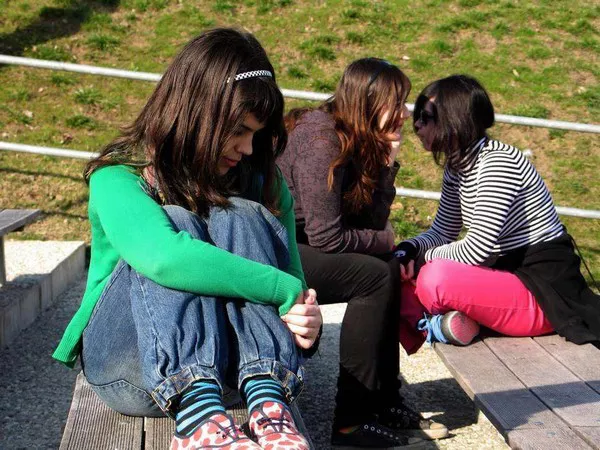Bipolar disorder, characterized by extreme mood swings that include emotional highs (mania or hypomania) and lows (depression), can be a challenging condition to manage. However, with proper treatment and support, individuals with bipolar disorder can achieve significant recovery and lead fulfilling lives. Recovery from bipolar disorder is a multifaceted process that involves medical, psychological, and lifestyle interventions. This article will explore what recovery from bipolar disorder looks like, providing a comprehensive understanding from a psychiatrist’s perspective.
Understanding Bipolar Disorder
Types of Bipolar Disorder
Bipolar disorder is divided into several types, each characterized by specific patterns of mood episodes:
Bipolar I Disorder: Defined by manic episodes lasting at least seven days or by manic symptoms that are so severe that immediate hospital care is needed. Depressive episodes occur as well, typically lasting at least two weeks.
Bipolar II Disorder: Characterized by a pattern of depressive episodes and hypomanic episodes, which are less severe than full-blown manic episodes.
Cyclothymic Disorder: Defined by periods of hypomanic symptoms and periods of depressive symptoms lasting for at least two years (one year in children and adolescents), but the symptoms do not meet the diagnostic requirements for a hypomanic episode and a depressive episode.
Symptoms of Bipolar Disorder
The symptoms of bipolar disorder can vary widely, depending on whether the individual is experiencing a manic, hypomanic, or depressive episode.
Manic/Hypomanic Episodes:
- Increased energy, activity, and restlessness
- Excessively high, euphoric mood
- Extreme irritability
- Racing thoughts and rapid speech
- Distractibility
- Decreased need for sleep
- Unrealistic beliefs in one’s abilities
- Poor judgment and impulsive behavior
Depressive Episodes:
- Persistent sad, anxious, or empty mood
- Feelings of hopelessness or pessimism
- Feelings of guilt, worthlessness, or helplessness
- Loss of interest or pleasure in activities once enjoyed
- Decreased energy or fatigue
- Difficulty concentrating, remembering, or making decisions
- Insomnia or oversleeping
- Changes in appetite or weight
- Thoughts of death or suicide
What Does Recovery from Bipolar Disorder Look Like?
1. Stabilization of Mood
The primary goal in the recovery from bipolar disorder is the stabilization of mood. This involves reducing the frequency and severity of mood episodes.
Medication: Mood stabilizers, antipsychotic medications, and antidepressants can help manage symptoms. Finding the right medication or combination of medications often requires time and patience.
Therapy: Psychotherapy, such as cognitive-behavioral therapy (CBT) and interpersonal therapy (IPT), helps individuals understand their condition, recognize triggers, and develop coping strategies.
2. Consistent Treatment and Monitoring
Consistent treatment and regular monitoring by healthcare professionals are crucial for managing bipolar disorder effectively.
Regular Appointments: Regular visits to a psychiatrist or therapist help in monitoring the effectiveness of the treatment plan and making necessary adjustments.
Monitoring Symptoms: Keeping track of mood changes, sleep patterns, and other symptoms can help in recognizing early signs of mood episodes.
3. Developing Healthy Routines
Establishing and maintaining healthy daily routines can significantly contribute to mood stability.
Sleep Hygiene: Maintaining a regular sleep schedule is essential for preventing mood episodes.
Exercise: Regular physical activity helps reduce stress and improve mood.
Balanced Diet: Eating a nutritious diet supports overall health and well-being.
4. Building a Support System
Having a strong support system is vital for recovery. This includes family, friends, support groups, and mental health professionals.
Family and Friends: Educating loved ones about bipolar disorder can help them provide better support.
Support Groups: Joining support groups allows individuals to connect with others who understand their experiences.
5. Managing Stress
Learning to manage stress effectively is crucial for preventing mood episodes.
Relaxation Techniques: Practices such as mindfulness, meditation, and yoga can help reduce stress.
Time Management: Prioritizing tasks and setting realistic goals can prevent feeling overwhelmed.
6. Psychoeducation
Understanding bipolar disorder and its treatment is an important part of recovery.
Education: Learning about the condition helps individuals recognize symptoms, understand the importance of treatment, and identify triggers.
Skills Training: Developing skills to manage the disorder, such as problem-solving and communication skills, enhances coping abilities.
7. Achieving Personal Goals
Recovery from bipolar disorder involves striving for personal goals and achieving a sense of purpose and fulfillment.
Setting Goals: Identifying and working towards personal and professional goals can provide motivation and direction.
Celebrating Successes: Acknowledging and celebrating achievements, no matter how small, boosts confidence and morale.
8. Preventing Relapse
Preventing relapse is a key aspect of long-term recovery. This involves recognizing early warning signs and taking proactive steps to prevent full-blown mood episodes.
Early Warning Signs: Identifying early symptoms of mania or depression allows for timely intervention.
Crisis Plan: Having a crisis plan in place, including emergency contacts and steps to take, can prevent escalation.
See Also: How Do You Confirm Bipolar Disorder?
Real-Life Stories of Recovery
Case Study 1: John’s Journey to Stability
John, a 35-year-old software engineer, was diagnosed with bipolar I disorder. After experiencing several severe manic and depressive episodes, he sought help from a psychiatrist. Through a combination of medication, CBT, and lifestyle changes, John achieved mood stability. He now manages his condition with regular therapy sessions, a strict sleep schedule, and a supportive network of family and friends.
Case Study 2: Maria’s Path to Balance
Maria, a 28-year-old teacher, struggled with bipolar II disorder for years. She experienced frequent hypomanic and depressive episodes, which affected her work and relationships. Maria’s psychiatrist prescribed mood stabilizers, and she engaged in interpersonal therapy. With education about her condition and learning stress management techniques, Maria found balance and now leads a fulfilling life, focusing on her career and hobbies.
Case Study 3: Emma’s Recovery and Resilience
Emma, a 42-year-old graphic designer, faced severe depressive episodes due to bipolar disorder. After multiple hospitalizations, she committed to a comprehensive treatment plan, including medication, therapy, and lifestyle adjustments. Emma also joined a support group, where she found encouragement and understanding. Today, Emma manages her symptoms effectively and works as an advocate for mental health awareness.
FAQs
Q1: Is full recovery from bipolar disorder possible?
Answer: While bipolar disorder is a lifelong condition, many individuals achieve significant recovery and lead fulfilling lives. Recovery involves managing symptoms, reducing the frequency and severity of mood episodes, and improving overall quality of life through consistent treatment, healthy routines, and support systems.
Q2: How long does it take to recover from bipolar disorder?
Answer: The timeline for recovery varies for each individual. Some may see improvements within a few months, while others may take years to achieve significant stabilization. Consistent treatment, regular monitoring, and a strong support system are key factors in the recovery process.
Q3: What role does medication play in the recovery from bipolar disorder?
Answer: Medication is often a crucial component of treatment for bipolar disorder. Mood stabilizers, antipsychotics, and antidepressants help manage symptoms and prevent mood episodes. Finding the right medication or combination of medications requires collaboration with a healthcare professional and may involve some trial and error.
Q4: Can therapy help in the recovery from bipolar disorder?
Answer: Yes, therapy is an essential part of recovery. Cognitive-behavioral therapy (CBT), interpersonal therapy (IPT), and other therapeutic approaches help individuals understand their condition, recognize triggers, and develop coping strategies. Therapy also provides a space for emotional support and personal growth.
Q5: How important is a support system in the recovery process?
Answer: A strong support system is vital for recovery. Family, friends, support groups, and mental health professionals provide emotional support, encouragement, and practical assistance. Educating loved ones about bipolar disorder helps them understand and offer better support.
Conclusion
Recovery from bipolar disorder is a continuous and multifaceted process. It involves stabilizing mood through medication and therapy, establishing healthy routines, building a support system, managing stress, and preventing relapse. With the right combination of treatments and strategies, individuals with bipolar disorder can achieve significant recovery and lead fulfilling lives. By understanding the condition, staying consistent with treatment, and fostering a supportive environment, recovery is not only possible but also sustainable.
Related topics:




























